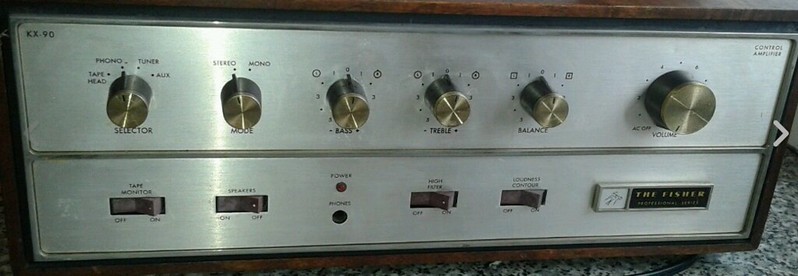rufleruf
Poor Impulse Control
I bought a pretty nice X 100 3 with a bad output transformer (silly rabbit). I am pretty sure no one is going to respond to my BT post looking for one - so... what would you guys do? I would prefer to only replace the one with something that looks pretty similar to the remaining good one, but maybe this is wishful thinking? I'm not overly reluctant to replace both - especially if there can be some improvement - though I aware these amps are highly regarded in stock form.
I have never shopped for output transformers, so pardon my ignorance. It looks like several sites have Push-Pull transformers listed for EL84 based amps, but I'm not sure if there are some other parameters I need to match. Volts, impedance, frequency response? I see Stancor touted as being very good and members of this forum have recommended them for other Fishers with bad OT's, so maybe one of you knows which one of their products I should use? And of course there are usually quite a few reasonably priced console pull stereo EL84 based amplifiers to choose from on the bay, - some even have similar looking OT's, but how do I know the transformers will work for me?
How do I know it's bad? Bringing the unit up on a variac I get a steady hum out of the left speaker regardless of other settings. If the speakers are on - I have a hum - it sounds like AC. I read a thread about a 500C that had similar symptoms and the OT was the culprit. I'm open to doing more tests of course.
Oh, and the amp is totally stock with a complement of tubes that all test and are known to be good.
Thanks!
Matt
I have never shopped for output transformers, so pardon my ignorance. It looks like several sites have Push-Pull transformers listed for EL84 based amps, but I'm not sure if there are some other parameters I need to match. Volts, impedance, frequency response? I see Stancor touted as being very good and members of this forum have recommended them for other Fishers with bad OT's, so maybe one of you knows which one of their products I should use? And of course there are usually quite a few reasonably priced console pull stereo EL84 based amplifiers to choose from on the bay, - some even have similar looking OT's, but how do I know the transformers will work for me?
How do I know it's bad? Bringing the unit up on a variac I get a steady hum out of the left speaker regardless of other settings. If the speakers are on - I have a hum - it sounds like AC. I read a thread about a 500C that had similar symptoms and the OT was the culprit. I'm open to doing more tests of course.
Oh, and the amp is totally stock with a complement of tubes that all test and are known to be good.
Thanks!
Matt



